
QR Codes: At Your Service
June 8, 2023 | By Doug Picklyk
Digital technology is bringing convenience to the job site and much more.
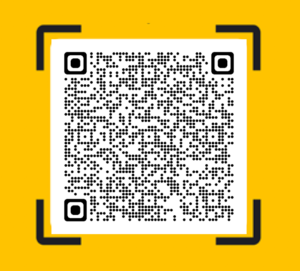 The quick response (QR) code has become ubiquitous in modern society. The square black-and-white pattern, resembling a maze or puzzle, has replaced restaurant menus and business cards, and can be found on airline tickets, event tickets and many other places, including plumbing and heating products.
The quick response (QR) code has become ubiquitous in modern society. The square black-and-white pattern, resembling a maze or puzzle, has replaced restaurant menus and business cards, and can be found on airline tickets, event tickets and many other places, including plumbing and heating products.
What is a QR code? In simple terms, a QR code is simply a link that can provide information or lead users to a website. QR codes were invented in Japan in 1994 as an improvement on the bar code. Made publicly available in 2002, adoption began in Japan, and it wasn’t until 2011 that they gained more mainstream attraction worldwide. But adoption was slow, as users needed to download and launch specific apps to scan the codes.
Things changed in 2017 when Apple iPhones and the Android operating system both added native QR code reading to smart phone cameras. It’s a feature that not everyone was aware of, and applications were still slow to jump onboard. (If you’ve never tried it, scan the code above and see where it takes you, and remember digital files are instantly shareable with others.)
The COVID-19 pandemic helped drive QR code adoption as the demand for contactless interactions was elevated, and QR codes allow a fast and touchless way to access information, perform transactions and even make payments.
Marketing
The codes have become popular in advertising campaigns, as a quick snap with a smart phone brings the user immediately online with a brand. The printed codes bridge the gap between the physical and digital worlds where companies can provide interactive experiences, discounts, or even offer users exclusive content.
QR codes are being integrated into various platforms, such as magazine advertising (take a look through your most recent printed issue of HPAC), posters, flyers, packaging and outdoor advertising.
For manufacturers in the plumbing and heating industry, the QR codes are proving attractive for marketing to contractors as well providing a true utility.
“What’s special is how companies are using it to weave different pieces of media together,” says Chris Rock, director of sales and marketing with Watts.
Recognizing that customers are receiving messages in many different ways, whether in a magazine ad, a sign in a tradeshow booth or at a wholesaler’s counter, the QR code is taking the user from a physical to a digital experience, and once the customer enters that “digital dialogue” the conversation can get more personalized.
Generating QR codes has very little cost, but as Rock points out, “The investment is what you do with it. It’s the work the company does behind the code.”
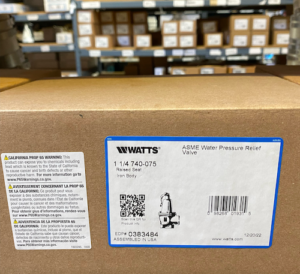 And that goes beyond creating a marketing experience and leads to providing real utility. He notes that Watts directs contractors to the information that’s most critical for specific parts through a QR code printed on its packaging, or with bigger valves it’s attached to the product itself.
And that goes beyond creating a marketing experience and leads to providing real utility. He notes that Watts directs contractors to the information that’s most critical for specific parts through a QR code printed on its packaging, or with bigger valves it’s attached to the product itself.
Industry Adoption
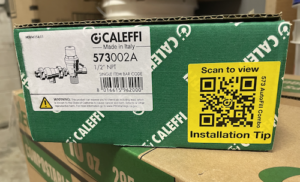 Many manufacturers in the HVAC and plumbing industry have made the investment in QR codes. An early user is Caleffi, who in 2017 introduced its Installation Tip videos, brief product-specific videos accessed by a QR code on their product boxes identified with a bright-yellow label.
Many manufacturers in the HVAC and plumbing industry have made the investment in QR codes. An early user is Caleffi, who in 2017 introduced its Installation Tip videos, brief product-specific videos accessed by a QR code on their product boxes identified with a bright-yellow label.
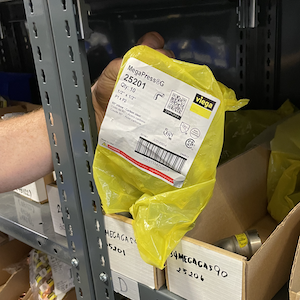 In 2021, Viega stopped including printed instructions inside the packages of most of its ProPress, MegaPress and PureFlow products made in the U.S., replacing them with QR codes on the label. The company claimed it would eliminate “more than 6 million pieces – or 32 tons of paper – a year.”
In 2021, Viega stopped including printed instructions inside the packages of most of its ProPress, MegaPress and PureFlow products made in the U.S., replacing them with QR codes on the label. The company claimed it would eliminate “more than 6 million pieces – or 32 tons of paper – a year.”
To find more, we joined HPAC writer Steve Goldie to stroll the aisles in search of QR codes at the Leaside warehouse at Next Supply in Toronto.
As Rock advised, the boxes with the Watts products had printed QR Codes on the packaging which led to product-specific information.
Goldie himself was not aware of how practical the QR codes on the packaging could be. “We get calls all the time with contractors looking for spec sheets. This can save a lot of time,” he says.
Our search revealed a dozen manufacturers with QR codes on labels. For some, the code led to PDF pages of instructions, while others simply led to a company website homepage.
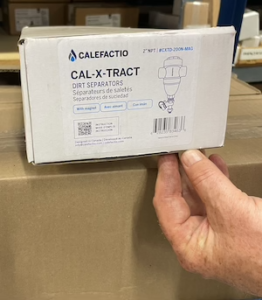 A flexible gas piping manufacturer had two QR codes in its label, an installation guide and one for warranty information.
A flexible gas piping manufacturer had two QR codes in its label, an installation guide and one for warranty information.
And some packaging had QR codes that led nowhere. It’s possible they are intended for inventory management only, not information for the end user.
It’s clear the adoption is not yet industry wide, but the potential is real.
Contractors and QR Codes
Aside from helping on a job site, QR codes can be used for a contracting company’s own marketing. Static QR codes can be generated for free and printed on flyers or signs to direct customers to a company website. Dynamic QR codes, which will cost a fee, can allow tracking and statistics to show how many people are clicking and where they are coming from.
Overall, QR codes are helping plumbing and heating technicians to work more efficiently and effectively, while also providing an opportunity to grow their business and enhance their customers’ experience.
As Chris Rock from Watts says, “QR codes are nothing to be intimidated by. They are a tool.” <>




